As the title of this post implies, I've got a lot of projects that are started, but most are lacking any level of completion yet. The list of current projects (and items covered in this update) are:
1. Finish assembling the entire main wing spar.
2. Finish building the wing jig (that has been hanging fire for 5 years!).
3. Finish building the "Prowler Rib Smasher." The two problems holding up this project are:
3a. Rebuilding the 100 hydraulic ram
3b. Finding a "high speed" pump solution to work with the "high pressure" pump.
4. Building an organized tooling cart for all the mill and lathe tooling.
5. CNC project for a friend.
6. Fixing the "Why won't it go, Daddy" on the Razor MX500 motorbike rear wheel.
One completed project for this update:
7. I now have a DRO (Digital Read Out) on the Bridgeport mill (again).
Before I get started on the update, I really want to thank my father for all of his help and support over the years. He as spent many hours helping me brainstorm, troubleshoot, build and/or fix a lot of the Prowler tools and machines that I will be using in production (hopefully) some day. Also, while serving my apprenticeship (growing up fixing, building and working on all manner of things around the house and shop) I learned so much about how to accomplish a lot of these projects. Were it not for this experience, I would never have gained the knowledge, insight or confidence to tackle a project of this magnitude. So, thanks Dad. I appreciate your help.
1. Finish assembling the entire main wing spar - I've finally cleared off enough space on one set of tables (from all the parts of all the other projects that are hanging fire) to begin doing the temporary assembly of the wing spars. These parts are long and take up a lot of table space in one direction. Here's a shot of the center section laid out with the RH outboard section.
We never got the chance to make these parts, and that's probably a good thing. Since then, I've gotten my own CNC mill and I've actually completed the CAD drawings. The CAD drawing and the hole pattern has changed since I first made the initial fixture (and is now different from what George made). That means now I have to essentially start over with a new fixture and a new program to cut these plates on my mill. In order to learn how to use my new mill, I decided to take on a side project for a friend. More about this in Item 5. below.
These wing attach plates are the most important part of bolting the outboard wing spars onto the center section. They are also integral in holding the MLG torque tube spherical bearings in place and help to align and hold the MLG torque boxes in place. You can see how they are used in this pic from Ray's numerous photos:
So, getting the program developed and the fixture plate made to machine out these parts is getting pretty high on the priority list. With what I've learned about using the Fagor8040M Controller on my mill in the past month, I should be able to get these made pretty soon. Just a few more dragons to slay before this makes the top of the "to do list."
When I do have these plates finished, I will continue the process of figuring out how I will get the proper alignment and hold everything in place while I ream all the holes to the proper sizes for the temporary assembly. Once the temporary assembly of the entire wing spar is complete, then I will be working on getting the wing jig completed (which is covered in the next Item below). When I've completed building the wing jig, then the wing spar must be completely disassembled into parts and every part will have to be acid etched and then chromated (Alodined) before final assembly. Then the entire assembly will go back into the jig.
2. Finish building the wing jig (that has been hanging fire for 5 years!) - So, as you can see from the picture below, my dad helped me build the first phase of the wing jig way back in Mar 2007!
I am most frustrated that I've been walking around this wing jig in the shop for over 5 years! (Look at how much room I had in my new shop back then!) But, the logical progress of this project (and all of it's associated pieces) can only go together so fast. Unfortunately, in the 5 years that the jig has been (mostly) installed, the it has become a long tray to hold all of my scrap steel, aluminum and other metal parts.
So, the first step of getting the wing spar installed into the jig is going to be to clean the jig back out and find a place to put all the metal that is "stored" there now. That project is related to Item 4 below (tool cart).
What needs to be done on the jig, once it is cleaned out and ready for the spar, is to complete the location of the 4 center posts. The two posts that you see in the picture are for mounting the ends of the outboard spars (actually attaching the tip ribs). The location of these two posts is very well defined (by wing span). The 4 center posts have a little variability. Two of these 4 inner posts attach to the underside of the main spar (fwd side) just inboard of the MLG torque boxes and on the under side (fwd side) of the wing spar attach plates (see how all this stuff is related).
The other two posts attach to the underside of the spar (fwd side) inside of the MLG wells and attached directly to a spacer plate that is placed between the spar cap strips on the fwd side of the spar. The inner posts must be made removable so that you can remove one side at a time when the time comes to install/cycle the MLG.
Needless to say, all these posts have to be accurately placed, and be precisely the correct height so that the spar is completely flat and level when it is finally installed. Fortunately, George had a pretty detailed and complete drawings to help build the jig and I have compiled a good set of reference pix from George and the previous builders..
3. Finish building the "Prowler Rib Smasher" - The day after I get the spar finally assembled and installed in the jig, my focus will shift to "decorating" the spar. By "decorating" I mean installing all of the "stuff" that gets attached to the spar. The most numerous of these parts are all the wing ribs. Obviously, before installing the ribs, I have to fabricate them and that is where the PRS (Prowler Rib Smasher) comes into play.
I've addressed this topic many times in previous posts, but now I have the mechanical side of this forming press completed (with the help of my father). My dad is a retired Ironworker and spends the winters "snowbirding" in Phoenix. When spring comes, my folks drive out for a family visit before heading back to Wisconsin. Having spent a winter without any welding, cutting torches, grinding etc., dad enjoys (I hope) having a project to work on with me in the shop. This year it was the PRS, which is a 100 ton press that is (now) fitted with special box that will contain dies, blanks, and rubber while "squishing" the ribs into shape.
The first step was to evaluate all of the existing parts that could be used and then determine what steel needed to be obtained to form the lower "box" and the upper "lid." We also had to figure out how each of these was going to be attached to the frame of the press. Here is a pic of the fabrication of the remodeled lower platen with "Pops" in the background:
Next, we discovered that the lower platen had been bent and had a pretty bad "hump" in the middle. This had to be removed or the dies used to form the parts would get bent and the ribs would come out bent. So, we fabricated a set of fixtures to hold the assembly in the mill and then installed it onto the mill bed. Here's the fixturing:
And, the whole thing installed on the mill:
And, here is a shot while machining the platen back to flat:
The only area that has to be flat is the bottom of the "box" and you can see where there is no material removed from the lower right corner of the box. There turned out to be a similar area in the upper left corner. After getting the box bottom machined flat, the sides were added (short sides are 3/4" steel flat bar and the long sides are 1/2" flat bar with 3 gussets):
The lid was fabricated from a piece of 5/8" plate steel that was recycled from a previous part of the press. This was welded to 3 pieces of 6" I-beams laid on their sides. Then all of this was welded to the upper frame of the press. Here is a pic of all of the mechanical mods completed on the press:
Next, we assembled the hydraulics. We converted a HFT air-over-hydraulics 10Kpsi pump to operate the 100 ram (converted bottle jack). Since the volume of oil required to run the ram is more than the reservoir on the air-over pump we had to add more reservoir capacity. The only thing handy in the shop was a spent fire extinguisher bottle. So, here is what we came up with (don't laugh! Atcually, this is really just a test setup to see if all this will/would work):
Once everything was hooked up, we tested the hydraulics. Two problems became readily apparent. First, the hydraulic pressure would bleed off (the system wasn't tight and the pressure would drop off over time). Second, we found that the volume of oil flow through the air-over unit was really low (the ram moved very, very slowly). These issues are discussed in the next items.
3a. Rebuilding the 100 Ram
After testing and finding that the pressure would not hold, we investigated the cause. We determined that the ram's piston seal had to be leaking. This started a 3-day project of re-boring and honing the ram cylinder and re-sealing the piston and ram cylinder.
The first step in the process was to make a spanner wrench to remove the ram packing retaining nut:
Then I had to machine (with the Bridgeport mill) a slug wrench that could be used to remove the big retaining nut on the top of the bottle jack. (Notice the previous use of a chisel and hammer to remove this nut.) This is the big nut that holds the whole bottle jack assembly together. Here is the completed wrench, on the nut that has been removed from the top of the ram:
Here is a picture of the upper reservoir seal ring, the ram seal retaining ring, the ram packing seal, and the big retaining nut removed from the bottle jack:
Here is a pic of the 100 ton ram (converted bottle jack) with the upper retaining nut (etc.) removed. You can see the outer jacket, the main cylinder, the top of the ram. The area between the outer jacket and cylinder is the bottle jack reservoir (no longer used in this application). The area between the cylinder and the ram is the difference in diameter of the ram and the diameter of the piston (can't see the piston here,as it is still down in the bottom of the cylinder)
Here is the bottle jack with the reservoir jacket removed:
And here is a pic of the base with everything removed except the lower cylinder seal ring:
Here is ram and piston removed from the cylinder (it's sitting upside-down on the bench - so the bottom of the piston is on top):
We found a fair amount of hydraulic fluid on top of the piston when we removed it from the cylinder. The only way for hydraulic oil to get there is for it to leak by the piston seal. This could be caused by a bad seal, a bad surface on the inside cylinder wall - or both. So, I decided to replace the seal and re-bore and hone the cylinder wall. To tackle the re-bore of the cylinder, the base and the cylinder were clamped onto the mill. I then set up the tooling to re-bore the cylinder inside diameter. Here's a pic of the setup - I am using a dial indicator to get the cylinder wall as parallel as possible to the quill/spindle on the mill (in the X direction - I had to repeat this in the Y direction too):
Here's the first boring operation to clean up the inside wall of the cylinder - you can see the new, clean surface being made at the top (this is only about a 0.002" pass, but it looks like much more):
Once the cylinder was re-bored I put it into the drill press and set it up for honing. Here's the setup:
This is the cylinder laying on the bench with a light in the background - nice, smooth and shiny:
On to the piston seal. It took a bit of "gumshoe" detective work to find a replacement seal. After a week of Internet searching, emailing and calling, I finally found the right place to make me a new leather seal for this ram. The place turned out to be AFC Hydraulics in Vernon, CA. Vernon is just south of downtown LA and I was able to go there while sitting on call during the day job (to pick up my new seal). If you need any kind of hydraulic parts, seals, power units, etc. give Oralia a call. She did a great job helping me out and the "guys" did a very nice job making my new seal. Check it out:
The old piston seal (lower left), the new seal (lower center), and the 1st new seal that I ordered incorrectly (lower right). On the upper left is the retaining washer that holds the seal in place on the bottom of the piston. On the upper right is the new lower cylinder seal ring that I also purchased from AFC Hydraulics.
Dad and I were somewhat surprised to find that these seals are still made of leather. Turns out that despite more than 100 years of technological advances, leather is still the best material around for making seals in demanding applications. There just isn't a better material that will form to irregularities on the sealing surfaces, remain pliable at extremely high and low temperatures, withstand abrasives, etc. etc. Pretty amazing.
I just picked the new seals up Fri pm and won't be back in the shop until late on Sun. I should have the 100 ton ram put back together on Monday. It will be very nice to have this project off my plate (and off my work bench)!
3b. Finding a "high speed" hydraulic pump solution - When we tested the PRS, we discovered that the cycle speed of the ram is very slow (I expected it to be slower than when I was using it in the press brake - but not THAT slow). So, now I have to find a way to quickly close the press (raise the 100 ton ram) until it begins to compress the rubber by some amount. Then (I think) I'll have an isolation valve to isolate this "low pressure, high speed pump" from the system. Once isolated, the high pressure, low speed air-over unit would compress the box fully to form the ribs.
Reversing the process would be relieving the system pressure to the point that the valve was closed on the way up, then opening the valve and relieving the pressure the rest of the way into the high speed pump. This process will have to be monitored to ensure that one or the other of the pump reservoirs doesn't overfill with hydraulic fluid.
Another option is to install a larger bore manual pump (like the one removed from the bottle jack) to help move a lot of fluid fast, then switch to the air-over unit. I'm not sure which way to go yet. But, I've got a little time to figure it out before I really have to start squishing wing ribs. More to follow on this project.
4. Building an organized tooling cart - As I get involved in more machining projects for the airplane, the amount of tooling that I've got laying around is getting a little unmanageable. I've got some stashed here, some there, etc. Well, a few months ago a buddy gave me two large drawer units that work excellent for storing all of the tooling, measuring, and setup equipment that is used with the mills and lathes. Also, I have to find a place to store all of the metal bits and pieces that I have to clean out of the wing jig.
One day I had a revelation and decided that if I can find a nice, organized place to keep all of my machine tooling, then I can used the mish-mash of current shelves as space to store all the metal. The only problem was building (and finding a place to put) the machine tooling cart. I think I've found a little real estate in the shop for the tooling cart. So work began (feverishly) on building the cart. I scoured my junk piles and found steel, steel shelves, casters, etc. that would go together without too much effort. Then I hauled out the drawer units and started to clean, scrape, bang, bend, sand and paint the drawer units back into decent shape (they'd been a little abused in the past). Here is the current state of the project. Here is one drawer shell setting on part of the newly fab'ed cart:
There will be two of these drawer sets, one on top of the other and then a top. The the bottom shelf will be for all the heavy things like vices, rotary tables, etc. Here are the drawers that have to be cleaned up, straightened and unbent (some of them):
Once it is all back together, the process of organizing and moving all the tooling into the drawers can begin. That'll be in a follow-up post.
5. CNC Side project - I have a friend that needed some help getting a CNC project underway. He asked me if I would give him a hand getting some programming and parts done. I was kinda looking for a project to help me learn to use my Ganesh CNC mill. So, we agreed on some terms and I set out to get it done.
So far, I've gotten the majority of the fixture plate (and sub-base) fabricated. This fixture plate will hold an entire set of the parts that he sells online for a product that he makes. Here is a pic:
All that remains to be done is place (pretty precisely) the mitey bites that hold the pieces of stock in place. Then I can begin to process the G-code to do the necessary operations on the pieces of stock.
In order to get some product out the door, I used my CNC mill and wrote the needed code to finish a set of his parts. He had gotten behind on several orders and really needed to get some product out the door so I completed the 1st 15 sets of parts a few weeks ago. Here are some examples of the parts to be made:
I'll have a few more parts runs to do to fulfill our agreement. But, now that the parts programs are written, they can be run anytime. That's the beauty of CNC machining.
6. Fixing the "Why won't it go, Daddy"- On a recent arrival home after the "day job" I was informed that the small electric motorbike that the girls have wasn't working. After a fairly quick investigation it became apparent that the clutching mechanism that allows the rear wheel wheel to "free-wheel" when the electric motor is not on and working was worn beyond repair.
Here you can see one of the little dogs that the wheel can free-wheel over in one direction, but then "takes a bite" if turned in the other direction. The dogs were all chipped and worn as well as the teeth in the other part. The spring that holds the dogs was also mangled. Best just to replace it all.
A short Internet search yielded a replacement rear wheel assembly that is making its way to the shop via UPS Ground. We should have it back together soon. All in all, it was a fun little project to do with the girls.Now, for the ONE project that I HAVE finished!
7. Bridgeport Mill DRO - I recently got a good deal on a new DRO for the mill. It's an Anilam Wizard 411 made by Acu-rite. The instructions were easy to follow and it basically took one full day to install the readout and the scales onto the mill. Here's a pic of the Y axis scale installed:
Here's the X axis and the Y axis scales installed on the mill:
And this is the control head installed:
When I finally disabled the old DRO that the Bridgeport came with, it was a tough call to make. But it was an old, unreliable system. While it took over a year to finally get it replaced, it was really a good thing - actually. It forced me to use the mill in the old fashioned "hand cranker way." That was valuable experience that has given me much more insight into the world of machining. With that said, it's nice to have the capability of the DRO back on the mill now.
That's all for this update. Hopefully, I will get another update done in a few weeks showing some closure on a lot of these projects. Until then, have a great spring season and thanks for stopping by to see the progress (or sometimes the lack of progress) here at the new Prowler Aviation.



.JPG)





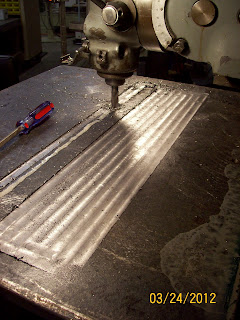


















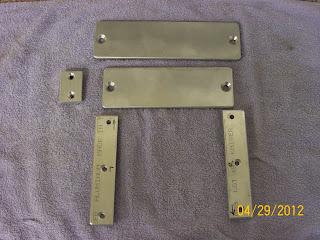





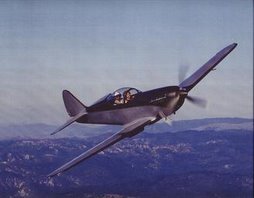
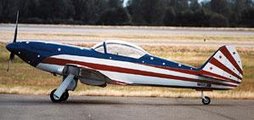
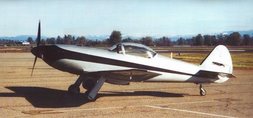
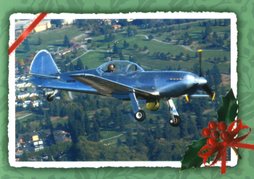
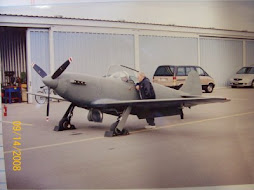
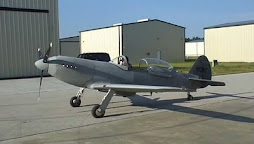

1 comment:
There are many tools in aviation industry that works on the principle of hydraulics.The maintenance of the hydraulic parts is very important as they also plays a major role in operation of aircraft.
Thanks
Henry Jordan
Hydraulic Cylinder Seals
Post a Comment